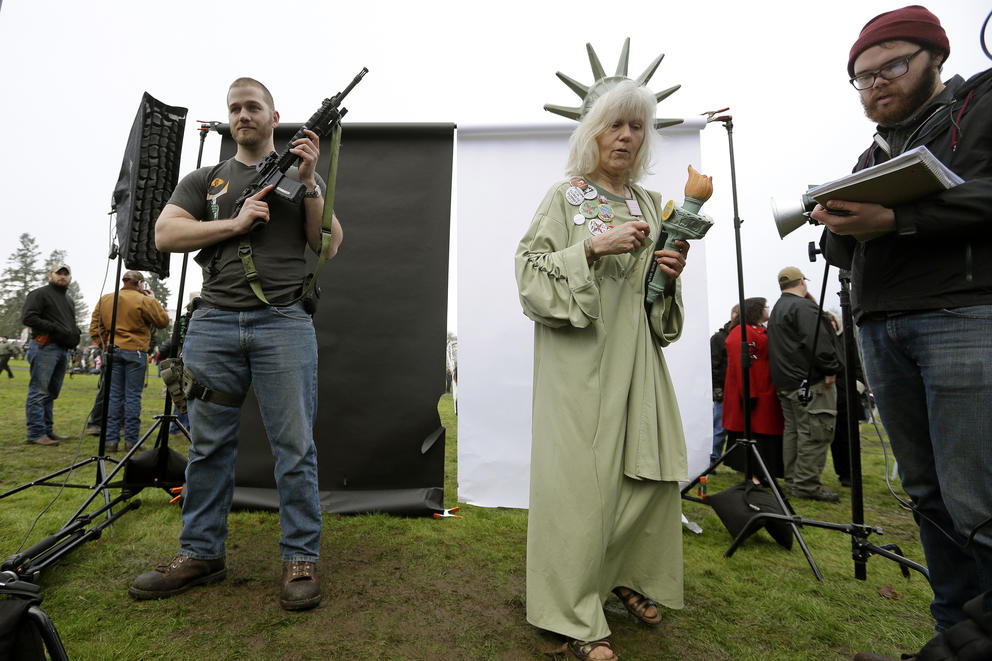When a mass shooting takes place like last week’s awful killing of 58 in Las Vegas, political reaction is both quick and utterly predictable: Democrats want longer waiting periods to buy a gun, a limit on gun magazines, a ban on “assault weapons” (though most have trouble describing them), a limit on the number of firearms you can own, etc. Second Amendment supporters staunchly oppose all of those things, partly because they wouldn’t have stopped the carnage in Vegas (or in Newtown, Aurora, Tucson or Virginia Tech) and partly because they see these restrictions as an attempt by the government to limit the constitutional rights of law-abiding citizens.
When these proposals fail, as they have previously and will again, liberals will tell the cameras this proves that Republicans don’t care as much about preventing mass shootings as they do. (And, come to think of it, groups like the National Rifle Association are partly responsible for them happening in the first place). Conservatives will say this proves that liberals don’t care about the Constitution when it doesn’t suit their ends and that they are virtual know-nothings about the issue of firearms.
And we are right back to where we started.
What a wasted opportunity.
It turns out that there is common ground between gun rights and gun control supporters on this issue, but it is missed because each is tilling a different part of the field. Conservatives are focused on the criminal; liberals are focused on the firearm(s). But beneath that ground are common roots with solutions that both sides would agree would reduce gun violence in this country. Here are three areas where a large majority of gun owners and gun opponents share similar opinions that could become law if only they would stop hating on each other for a moment:
Solution One: Bump Stock devices. If you listen to the chilling audio of the Vegas shooter’s gunfire against the backdrop of the Jason Aldean concert, it sounds like an automatic weapon. The difference between an automatic weapon and a semi-automatic weapon is not trivial. Most firearms, particularly handguns, are semi-automatic; they discharge one bullet every time you pull the trigger. When you pull the trigger on an automatic weapon, it spits out bullets until you take your finger off the trigger: more than 400 rounds per minute. As one caller to my radio program described the Vegas audio: “It sounded like Vietnam.”
Automatic weapons have been illegal for almost anyone to possess for decades. But authorities have concluded that the Vegas killer didn’t fire an automatic weapon. Instead, he used a “bump stock,” which is basically a vibrating device that automates trigger pulling, turning it into a poor man’s machine gun. The bump stock device is just a workaround federal law. The NRA has called for increased regulation of the devices, calling for the ATF to review its previous regulatory approval of them.
Suggestion: Make bump stock devices illegal. They make a mockery of the law prohibiting automatic weapons.
Solution Two: Stolen Guns. Here is a statistic that surprises most people: the percentage of guns in America rose nearly 50 percent between 1993 and 2013. During that same period of time, the gun homicide rate fell by nearly 50 percent. Not only is there no connection between rising gun ownership and gun violence, you can make a persuasive case in precisely the opposite direction.
But how to explain Chicago, which is nearing a thousand homicides for the year, or Baltimore a city with fewer people than Seattle but with 275 murders this year? (As of Oct. 5, Seattle has had 15 murders). The answer is: the overwhelming majority of guns used in crimes are stolen. A University of Chicago study, which tracked the findings of the city’s police department, put the percentage of gun crimes committed with legally purchased guns at less than 3 percent. A federal study in 2004 put the percentage of legally bought guns used in crimes closer to 11 percent. But the vast number of guns used to kill people are stolen.
Suggestion: Dramatically increase the criminal penalties for stealing a firearm. Make sentences so stiff that a burglar would bypass the .38 in the nightstand drawer rather than risk the penalty of being caught with it. A five-year sentence for stealing a firearm would not only put a crimp in the underground gun buying market, it would also stigmatize the possession of illegal guns — something that would benefit everybody who doesn’t want to get shot and would vastly benefit low-income communities where people are far more likely to be victims of gunfire.
Solution Three: Straw Purchases of firearms. Just as a bump stock is a way to avoid the federal ban on automatic weapons, a “straw purchased” handgun is an attempt to work around federal criminal background checks.
They work like this: someone who is legally allowed to buy a firearm goes into a gun store, picks one out, completes the background check paperwork, buys the gun, eventually takes possession of it — then gives or sells it (usually at an exorbitant markup) to someone who isn’t allowed to own a firearm (such as a convicted felon). Unlike bump stocks, which are still legal, straw purchases of firearms are flat out illegal under federal law. And the penalty is real — on paper: up to 10 years in prison and a $250,000 fine. But there the reality fades. These laws are rarely enforced and are regarded as a low priority by the feds.
Suggestion: Make it a high priority, with one or more highly publicized cases in which federal prosecutors hit straw purchasers hard. Keep in mind, straw purchases involve lying by two people — the purported buyer and the real one — which creates another stream for illegal firearms to enter the system. This suggestion doesn’t require a change in federal law, just a change in federal priorities. If the feds don’t step up, then states should enact their own laws punishing straw purchases. Some states already have; they include California, Oregon and Illinois.
These three solutions will require the usual give-and-take involved with any legislation touching on a sensitive topic (guns, abortion, free speech, religion). Should bump stocks be regulated or outright banned? What if the gun reported “stolen” was borrowed by a family member to go shooting at the gun range with friends? What if the straw purchaser was buying for a family member being stalked by an ex-boyfriend?
Legislation will require meticulous drafting and focused debate on fine details. But changing the status quo on these three issues means safer streets and stronger integrity built into existing law.
Let’s get these three things done. We can fight about the other stuff later.
John Carlson co authored the nation’s first “Three Strikes” law in 1993.



